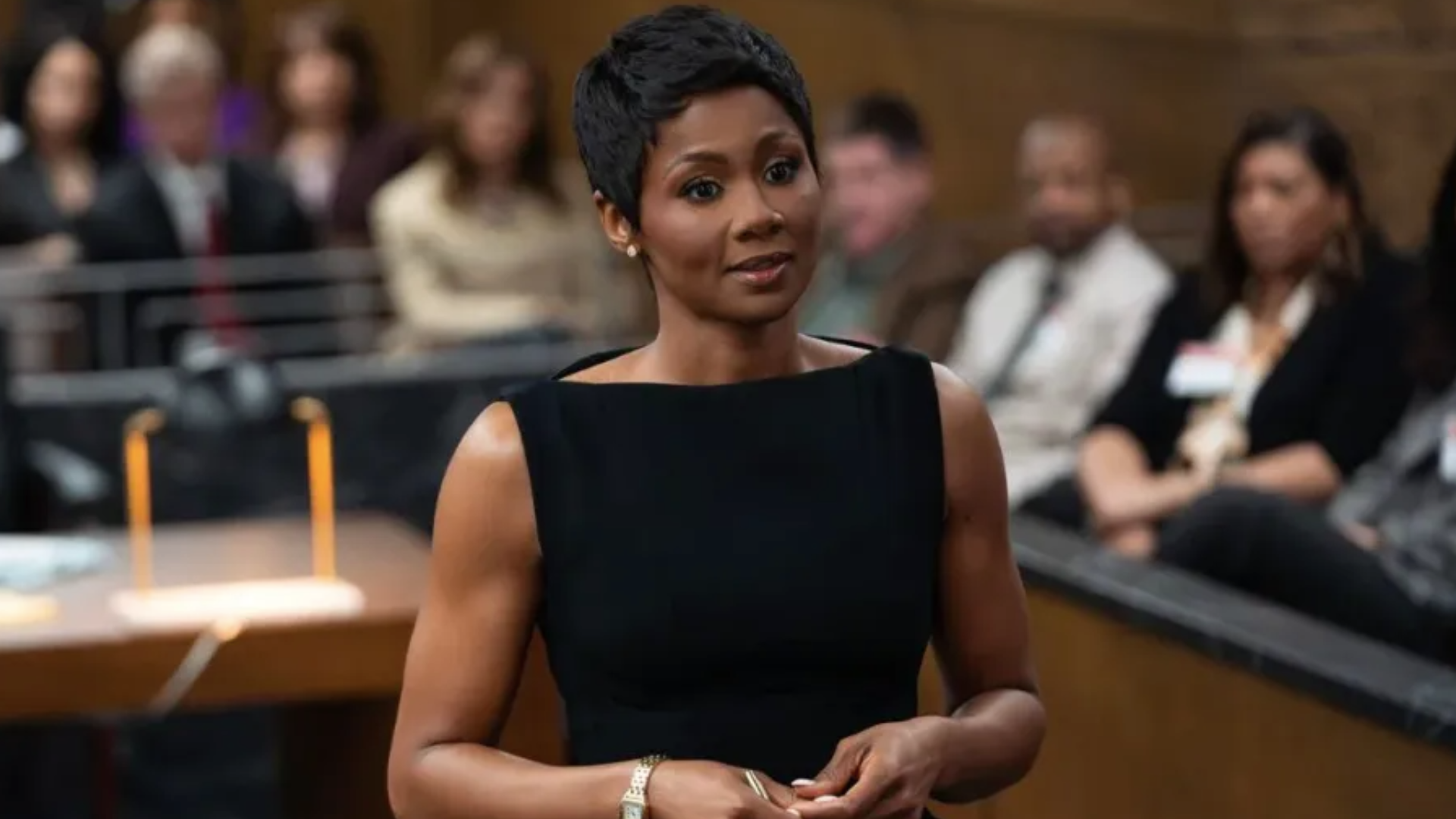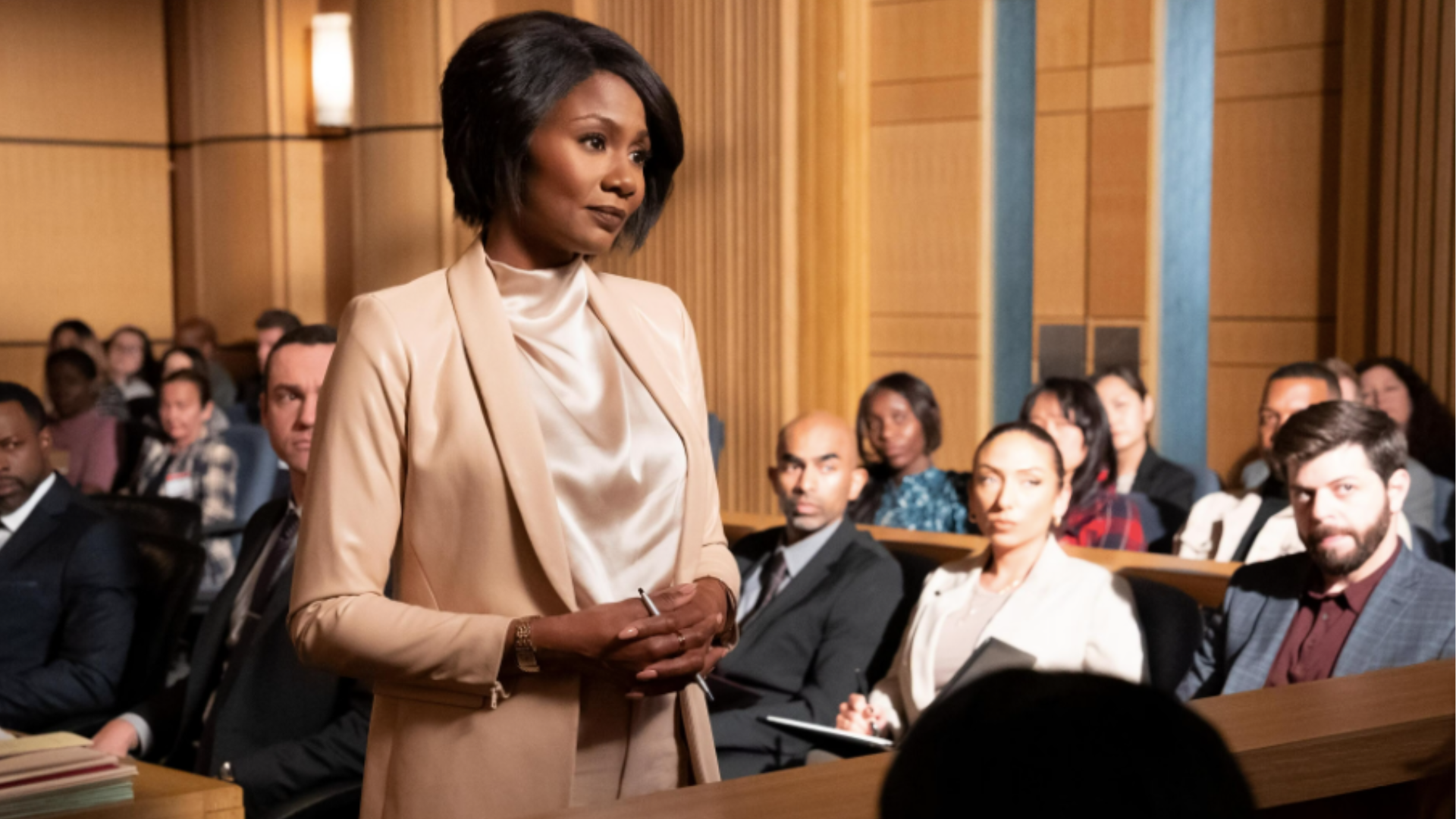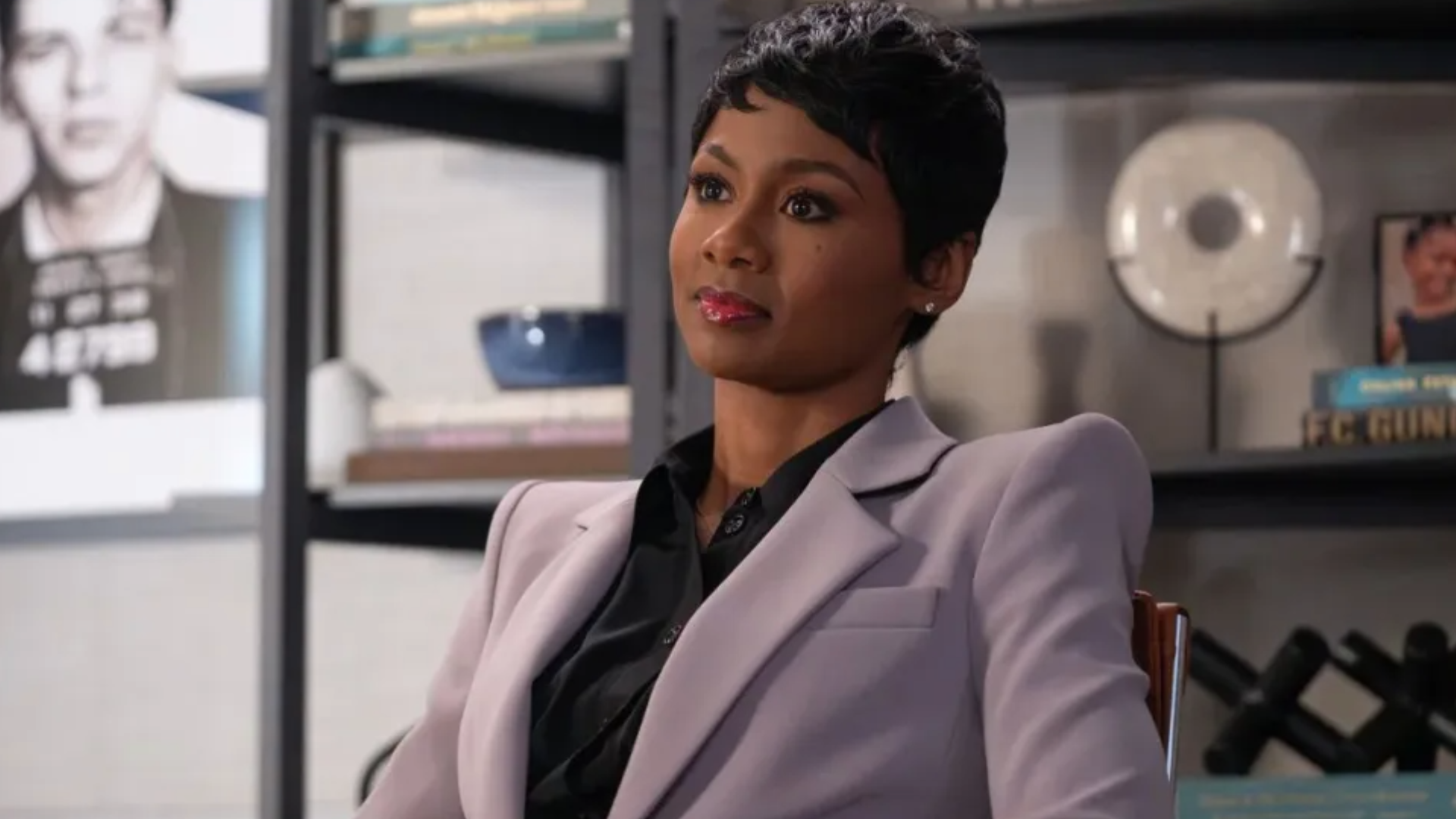Uncategorized
https://www.essence.com/fashion/reasonable-doubt-costumes-outfits-season-two/
 Disney/Hulu
Disney/Hulu By Robyn Mowatt ·Updated September 2, 2024
In the latest season of legal drama Reasonable Doubt, Jax Stewart is still grappling with motherhood, her marriage, and her high-powered career. As an attorney at a reputable law firm in Los Angeles, she often dons suits to showcase how conservative her workplace is. Since she happens to be a partner, when she shows up to the office she must dress the part, sleek suits and not much else will cut it. Derica Cole Washington, the series costume designer did an excellent job last season setting a high precedent for what we can expect from Stewart (Emayatzy Corinealdi). This season is a minuscule departure. When the season begins, Jax is home due to a leave she took to handle her emotional state following the debut season of the series. Due to this tiny change of location, we get to see Jax in her element at home a bit. This makes for a compelling watch so far, especially as she returns to the office–her workwear is juxtaposed with her laidback house clothes. The clothing worn by Corinealdi speaks to the strength that lies beneath her head scarves, her high-shouldered suits, and kitschy graphic T-shirts.
With her return to office looming, we spot Jax in a grey Alo Yoga blazer coat and athleisure separates for the earliest parts of the first episode. But later on, as she’s cleared to go back to work she has to switch things up. Changing between worlds, home, and the office harkens to how Black women must put on clothing that can be deemed the armor that they wear to protect themselves from the world.
 Disney/Hulu
Disney/Hulu
For her in-office return, an Alexander McQueen rosette corsage blazer jacket in a deep purple hue and matching pants are chosen. This suit is eloquent and spot on–Jax needs to portray herself as someone who has it together even if she’s struggling inwardly. On the outside, this suit is elevated enough to show the partners at the law firm that she is ready to handle whatever comes her way this season. And the hue plays a part in that as well, deep people is a war-ready tone.
Later in the episode, a striking L’agence silk shirt in yellow makes an appearance and so does another blouse in light purple by Frame. Both of these blouses set a unique precedence too. They are detail-oriented and depict that Jax tends to play it safe concerning her workwear. Since she is a woman of her word she has an image to uphold and these tops speak to that wholly.
As the season continues a deep grey Vince blouse and a vintage-inspired New Edition graphic T-shirt are adorned on the titular character. The juxtaposition here alludes to her ability to dress comfortably but also to lean heavily into her workwear when she needs to.
Similarly, another graphic T-shirt was worn previously, a Jimi Hendrix graphic shirt. The tees strike me as ironic–she may appear uptight but her shirts are doing a bit of talking for her: New Edition, Jimi Hendrix, and another Ice-T’s Power album tee are downright fun.
 Disney/Hulu
Disney/Hulu
In episode two, a Sergio Hudson suit comprised of a crepe jacket in light purple and matching cropped flare trousers delves even further into the structured suiting that is prevalent this season. This suit evokes grace anddecoding=”async” src=”https://www.essence.com/wp-content/uploads/2024/09/morris-chestnut-reasonable-doubt.png” alt=”Emayatzy Corinealdi’s Costumes In ‘Reasonable Doubt’ Showcase Powerful Workwear” width=”400″ height=”225″ />Disney/Hulu
Another switch-up that is pivotal to this season is the inclusion of Morris Chestnut, a new attorney who joins the cast as Corey. Paralleled with the relaxed sartorial inclinations of Jax’s husband, Lewis (McKinley Freeman), Corey is depicted as a powerful new character. His structured and well-tailored suits make this quite clear. While this season Lewis dons a Domrebel bomber jacket in cream with detailed embroidery and sketches. He also wears tees that signal his easygoing demeanor whereas Corey is the polar opposite.
Elements of sophistication are placed in refined ways throughout this season’s wardrobe. Jax appears in a positive light for most of the season too. Her workwear is the most significant in the series episodes just as they were last season because she holds the show together. Grace is shown to this lead character often, and despite this notion, she never misses the mark in her office. Overall, attention to detail and clothing that evokes strength via tailored suits and lengthy trousers is the crux of Jax’s power alongside her intellect and wit. And that is what nearly makes Reasonable Doubt one of the summer’s most fun shows to watch in addition to the topsy-turvy plotlines and the detailed clothing by Derica Cole Washtington.
TOPICS: Emayatzy Corinealdi Reasonable Doubt
The post Emayatzy Corinealdi’s Costumes In ‘Reasonable Doubt’ Showcase Powerful Workwear appeared first on Essence.



